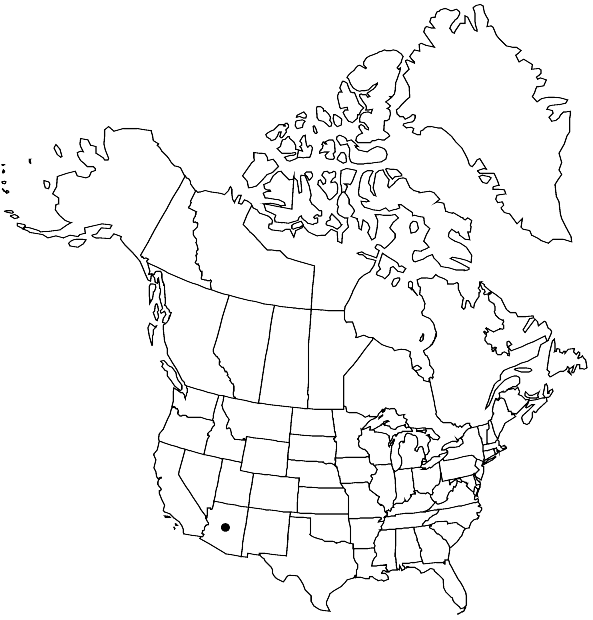Entosthodon sonorae
Bryologist 41: 39. 1938,.
Plants 2–4 mm, pale yellow green. Leaves variously contorted when dry, ovate to oblong to obovate, imbricate, somewhat concave, mostly 1.5–2 mm; margins serrulate by projecting ends of thin-walled cells; apices acute, terminating in a 1–2-celled apiculus, costa ending 7–10 cells before the apiculus; basal laminal cells rectangular (50–70 × 18–25 µm), distal cells irregularly short- to oblong-rectangular, somewhat inflated marginally. Seta pale yellow, 4–5 mm, straight, not hygroscopic. Capsule yellow, elongate-cylindrical from a neck half or more the total length, 2.5–3 mm, weakly sulcate when dry and empty; exothecial cells scarcely thickened, narrowly oblong (3–4:1) near the mouth and transversely elongate in 4–6 rows proximal to the mouth; operculum conic-rounded; peristome pale brownish yellow, lanceolate with thin trabeculae proximally and terminating in a 1–2-celled hyaline evanescent tip, striate basally and nearly smooth at the tips, endostome not seen. Calyptra cucullate, long-beaked, inflated around the capsule, large, smooth. Spores 18–25 µm, smooth.
Habitat: Mineral soils, probably in shade of rocks or in crevices
Elevation: moderate to high elevations
Distribution

Ariz., Mexico (Sonora).
Discussion
Enthosthodon sonorae is restricted to the Sonoran Region of southwestern United States and northern Mexico.
Selected References
None.